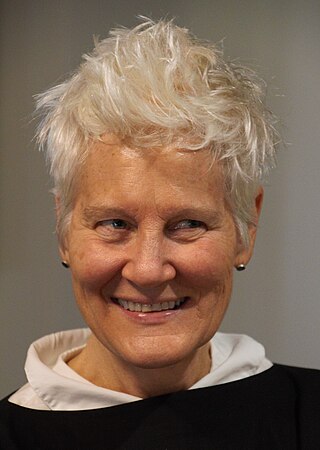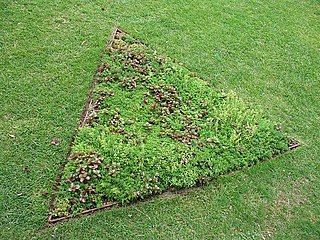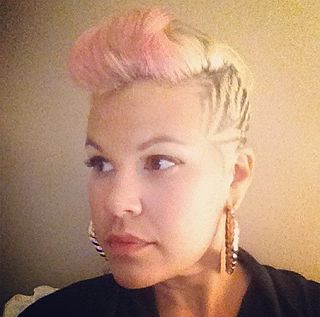Related Research Articles

The Bibliotheca Alexandrina (BA) is a major library and cultural center on the shore of the Mediterranean Sea in Alexandria, Egypt. It is a commemoration of the Library of Alexandria, once one of the largest libraries worldwide, which was lost in antiquity. The idea of reviving the old library dates back to 1974 when a committee set up by Alexandria University selected a plot of land for its new library. Construction work began in 1995, and after some US$220 millions had been spent, the complex was officially inaugurated on 16 October 2002. In 2009, the library received a donation of 500,000 books from the Bibliothèque nationale de France (BnF). The gift makes the Bibliotheca Alexandrina the sixth-largest Francophone library in the world.
Alice Aycock is an American sculptor and installation artist. She was an early artist in the land art movement in the 1970s, and has created many large-scale metal sculptures around the world. Aycock's drawings and sculptures of architectural and mechanical fantasies combine logic, imagination, magical thinking and science.

Kiki Smith is a German-born American artist whose work has addressed the themes of sex, birth and regeneration. Her figurative work of the late 1980s and early 1990s confronted subjects such as AIDS, feminism, and gender, while recent works have depicted the human condition in relationship to nature. Smith lives and works in the Lower East Side, New York City, and the Hudson Valley, New York State.
Tara Donovan is an American sculptor who lives and works in Brooklyn, New York. Her large-scale installations, sculptures, drawings, and prints utilize everyday objects to explore the transformative effects of accumulation and aggregation. Known for her commitment to process, she has earned acclaim for her ability to exploit the inherent physical characteristics of an object in order to transform it into works that generate unique perceptual phenomena and atmospheric effects. Her work has been conceptually linked to an art historical lineage that includes Postminimalism and Process artists such as Eva Hesse, Jackie Winsor, Richard Serra, and Robert Morris, along with Light and Space artists such as Mary Corse, Helen Pashgian, Robert Irwin, and James Turrell.

Isa Genzken is a German artist who lives and works in Berlin. Her primary media are sculpture and installation, using a wide variety of materials, including concrete, plaster, wood and textile. She also works with photography, video, film and collage.

Betty Parsons was an American artist, art dealer, and collector known for her early promotion of Abstract Expressionism. She is regarded as one of the most influential and dynamic figures of the American avant-garde.

Ann Hamilton is a visual artist who emerged in the early 1980s known for her large-scale multimedia installations. After receiving her BFA in textile design from the University of Kansas in 1979, she lived in Banff, Alberta, and Montreal, Quebec, Canada before deciding to pursue an MFA in sculpture at Yale in 1983. From 1985 to 1991, she taught on the faculty of the University of California at Santa Barbara. Since 2001, Hamilton has served on the faculty of the Department of Art at the Ohio State University. She was appointed a Distinguished University Professor in 2011.

Alan Rankle is a British artist and is part of the duo Rankle & Reynolds. During a thirty-year career he has worked primarily as a painter. He explores social and environmental issues of the day through Landscape Art.

Rose Frain is a visual artist based in Edinburgh, Scotland, exhibiting nationally and internationally, whose works range from painting and sculpture to installation.

Pat Steir is an American painter and printmaker. Her early work was loosely associated with conceptual art and minimalism, however, she is best known for her abstract dripped, splashed and poured "Waterfall" paintings, which she started in the 1980s, and for her later site-specific wall drawings.

Hanneke Beaumont is a Dutch sculptor known for her large scale figurative works in terracotta, bronze and cast iron.
Jean Shin is an American artist living in Brooklyn, NY. She is known for creating elaborate sculptures and site-specific installations using accumulated cast-off materials.

Heather T. Hart is an American visual artist who works in a variety of media including interactive and participatory Installation art, drawing, collage, and painting. She is a co-founder of the Black Lunch Table Project, which includes a Wikipedia initiative focused on addressing diversity representation in the arts on Wikipedia.
Sara Black is an American artist. She currently teaches at Antioch College and previously taught at Northwestern University and the School of the Art Institute of Chicago. Her "performances, sculpture, installation, and collaborative works evolve around an interest in how materials move through the world and the shifting designation of values in American culture." She holds a BFA in sculpture and installation from the University of Chicago, a Bachelor of Arts in environmental studies and art from The Evergreen State College, and a Bachelor of Fine Arts in sculpture and painting from the University of Wisconsin–Eau Claire. She was a co-founder of the art collective Material Exchange which was active in Chicago until 2010 and currently works collaboratively with artists Jillian Soto, Charlie Vinz and others. Her work has been widely exhibited in several galleries including the Smart Museum of Art, the Experimental Station, the Museum of Contemporary Art, Chicago, the Betty Rymer Gallery, Gallery 400, the Hyde Park Art Center, Portland State University, The Park Avenue Armory, New York, The Museum of Contemporary Craft, Portland, Eyebeam, New York and the DeVos Art Museum.

Mary Miss is an American artist and designer. Her work has crossed boundaries between architecture, landscape architecture, engineering and urban design. Her installations are collaborative in nature: she has worked with scientists, historians, designers, and public administrators. She is primarily interested in how to engage the public in decoding their surrounding environment.

Eve Andree Laramee is an installation artist whose works explores four primary themes: legacy of the atomic age, history of science, environment and ecology, social conditions. Her interdisciplinary artworks operate at the confluence of art and science. She is currently full professor and chair of the Department of Art and Art History at Pace University. Laramee currently lives in Brooklyn, New York, and Santa Fe, New Mexico. She is also the founder and director of ART/MEDIA for a Nuclear Free Future.
Jennifer Bolande is an American postconceptual artist whose work employs various media—primarily photography, sculpture, film and site-specific installations in which she explores affinities between particular sets of objects and images and the mercurial meanings they manufacture.
Meg Webster is an American artist from San Francisco working primarily in sculpture and installation art. While her works span multiple media, she is most well known for her artworks that feature natural elements. She is closely affiliated with Post-Minimalism and the Land Art movement and has been exhibiting her work since 1980.

Elyn Zimmerman is an American sculptor known for her emphasis on large scale, site specific projects and environmental art. Along with these works, Zimmerman has exhibited drawings and photographs since graduating with an MFA in painting and photography at University of California, Los Angeles in 1972. Her teachers included Robert Heineken, Robert Irwin, and Richard Diebenkorn.
Torkwase Dyson is an interdisciplinary artist based in Beacon, New York, United States. Dyson describes the themes of her work as "architecture, infrastructure, environmental justice, and abstract drawing." Her work is informed by her own theory of Black Compositional Thought. This working term considers how spatial networks—paths, throughways, water, architecture, and geographies—are composed by Black bodies as a means of exploring potential networks for Black liberation. She is represented by Pace Gallery and Richard Gray Gallery.
References
- ↑ "ArtCat Zine - Features - Market Forces: Consuming Territories". zine.artcat.com. Archived from the original on 2016-08-11. Retrieved 2016-12-19.
- ↑ Boetzkes, Amanda (2010). The Ethics of Earth Art. University of Minnesota Press. pp. 30–35. ISBN 978-0-8166-6588-4.
- ↑ Phillips, Patricia C. "Beaumont: Who Survives?", Art Journal, Vol. 65, No. 1, (Spring 2006), pp 56-7.
- 1 2 3 Beaumont, Betty; Knode, Marilu (1989-01-01). Betty Beaumont: Changing Landscapes : Art in an Expanded Field : 26 August-23 September, 1989. Rochdale Art Gallery.
- ↑ Bloemink, Barbara (1990-01-01). A Natural Order: The Experience of Landscape in Contemporary Sculpture. Hudson River Museum. ISBN 9780943651231.
- ↑ Art Nature Dialogues. www.sunypress.edu. Retrieved 2016-12-19.
- ↑ "Ocean Landmark by Betty Beaumont". greenmuseum.org. Archived from the original on 2016-10-01. Retrieved 2016-12-19.
- ↑ Grande, John K. "Culture Nature Catalyst: Betty Beaumont", Art Nature Dialogues: Interviews with Environmental Artists, State University New York Press, 2005, pp, 255-65.
- ↑ "Revisiting a 1992 Sign Project that Acknowledged NYC's Lost Histories". Hyperallergic. 2015-09-04. Retrieved 2016-12-19.
- ↑ "Photography: Beaumont | Newfound". newfound.org. 31 January 2011. Retrieved 2016-12-19.
- ↑ Slupe, Ellen. "Inside PA", Art Matters: The Philadelphia Region's Magazine of the Arts, 2008, p. 8.
- ↑ "Market Forces - Carriage Trade". www.carriagetrade.org. Retrieved 2016-12-19.
- ↑ "Another Green World - Carriage Trade". www.carriagetrade.org. Retrieved 2016-12-19.
- ↑ "Betty Beaumont - Women Eco Artists Dialog". Women Eco Artists Dialog. Retrieved 2016-12-19.
- ↑ "Alumni 2006". Archived from the original on 2013-12-16. Retrieved 2016-12-19.